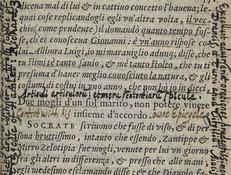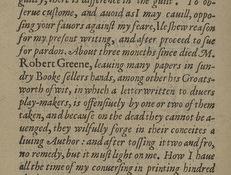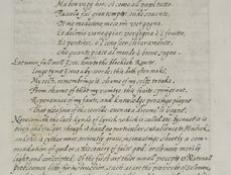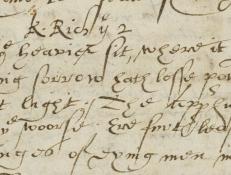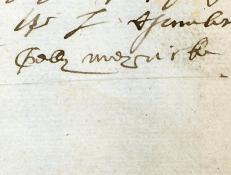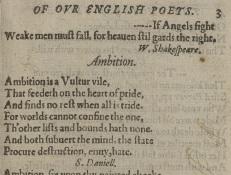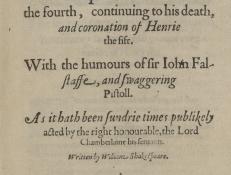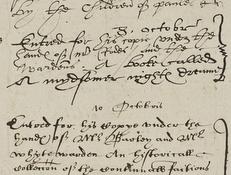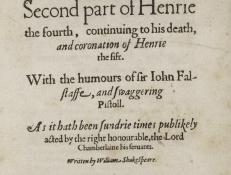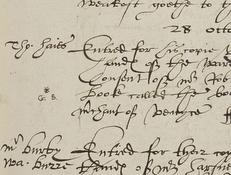To view a sortable list, please visit the Resource
All Documents
ca. 1580-1608?
The scholar and writer Gabriel Harvey was known and mocked in his lifetime for making copious notes in the margins of printed books. An inventor of words, friend of Edmund Spenser, and rival of Thomas Nashe, he constantly sought to improve himself through note-taking and repetitive reading.
1592
SHAKESPEARE DOCUMENTED IS STILL GROWING! Descriptive content and transcriptions will continue to be added, updated and expanded. Check back for regular updates!
ca. 1599
William Scott’s The Modell of Poesye, a treatise on poetics, includes the earliest literary criticism of Shakespeare. Although Shakespeare is not mentioned by name in the manuscript, two of his works are.
ca. 1600
SHAKESPEARE DOCUMENTED IS STILL GROWING! Descriptive content and transcriptions will continue to be added, updated and expanded. Check back for regular updates!
February 17, 1600
In early 1601, Robert Devereux, Earl of Essex, led a rebellion which was over almost as soon as it began.
1600
Englands Parnassus is one of two printed commonplace books, or collections of extracts organized by topic, compiled by Robert Allott, and was printed shortly after John Bodenham’s Bel-vedére.
1600
This is the first edition of Henry IV, Part 2, printed in 1600 by Valentine Simmes for Andrew Wise and William Aspley, who entered it into the Stationers’ Register on August 23, 1600, along with Much Ado About Nothing.
October 8, 1600
A Midsummer Night's Dream was entered into Liber C of the Stationer's Company on October 8, 1600.
1600
This is the variant of the first edition of Henry IV, Part 2, printed in 1600 by Valentine Simmes for Andrew Wise and William Aspley, who entered it into the Stationers’ Register on August 23, 1600, along with Much Ado About Nothing
October 28, 1600
The Merchant of Venice was originally entered into Liber C of the Stationers' Company on July 22, 1598, and licensed to James Roberts.

